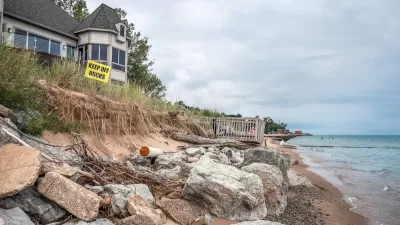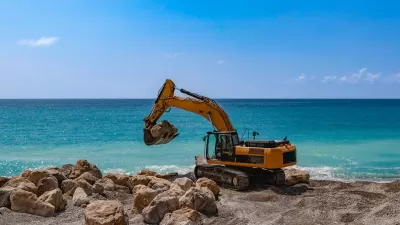A new resource created by the National Oceanic and Atmospheric Administration in partnership with the APA makes it easier for planners to access the data necessary to plan for climate adaptation, sea level rise, and other forms of coastal resilience.
The National Oceanic and Atmospheric Administration has created a resource called Digital Coast, which "hosts freely available data on coastal hazards, along with a lot of site-specific local data, as well as the training, tools, and resources needed to turn these data into useful information," according to a post on the APA Policy News blog.
"Developed by NOAA’s Office for Coastal Management, with support from partnership organizations such as the APA, the Digital Coast is an enabling platform that assists users in analyzing coastal vulnerability, simulating projections of impacts, creating publishable visualizations and “snapshots” of potential future scenarios, and more. Digital Coast tools and data that are directly focused on climate adaptation and hazard planning include the Sea Level Rise Viewer, the Coastal Flood Exposure Mapper, and high resolution elevation datasets (derived from Light Detection and Ranging, or LiDAR)."
The article includes more insight into the resources provided by Digital Coast and other partnerships with NOAA and APA divisions.
FULL STORY: Digital Coast Helps Planners Build Hazard Resilient Communities

Rethinking Redlining
For decades we have blamed 100-year-old maps for the patterns of spatial racial inequity that persist in American cities today. An esteemed researcher says: we’ve got it all wrong.

Planetizen Federal Action Tracker
A weekly monitor of how Trump’s orders and actions are impacting planners and planning in America.

Montreal Mall to Become 6,000 Housing Units
Place Versailles will be transformed into a mixed-use complex over the next 25 years.

Santa Clara County Dedicates Over $28M to Affordable Housing
The county is funding over 600 new affordable housing units via revenue from a 2016 bond measure.

Why a Failed ‘Smart City’ Is Still Relevant
A Google-backed proposal to turn an underused section of Toronto waterfront into a tech hub holds relevant lessons about privacy and data.

When Sears Pioneered Modular Housing
Kit homes sold in catalogs like Sears and Montgomery Ward made homeownership affordable for midcentury Americans.
Urban Design for Planners 1: Software Tools
This six-course series explores essential urban design concepts using open source software and equips planners with the tools they need to participate fully in the urban design process.
Planning for Universal Design
Learn the tools for implementing Universal Design in planning regulations.
City of Camden Redevelopment Agency
City of Astoria
Transportation Research & Education Center (TREC) at Portland State University
Regional Transportation Commission of Southern Nevada
Toledo-Lucas County Plan Commissions





























